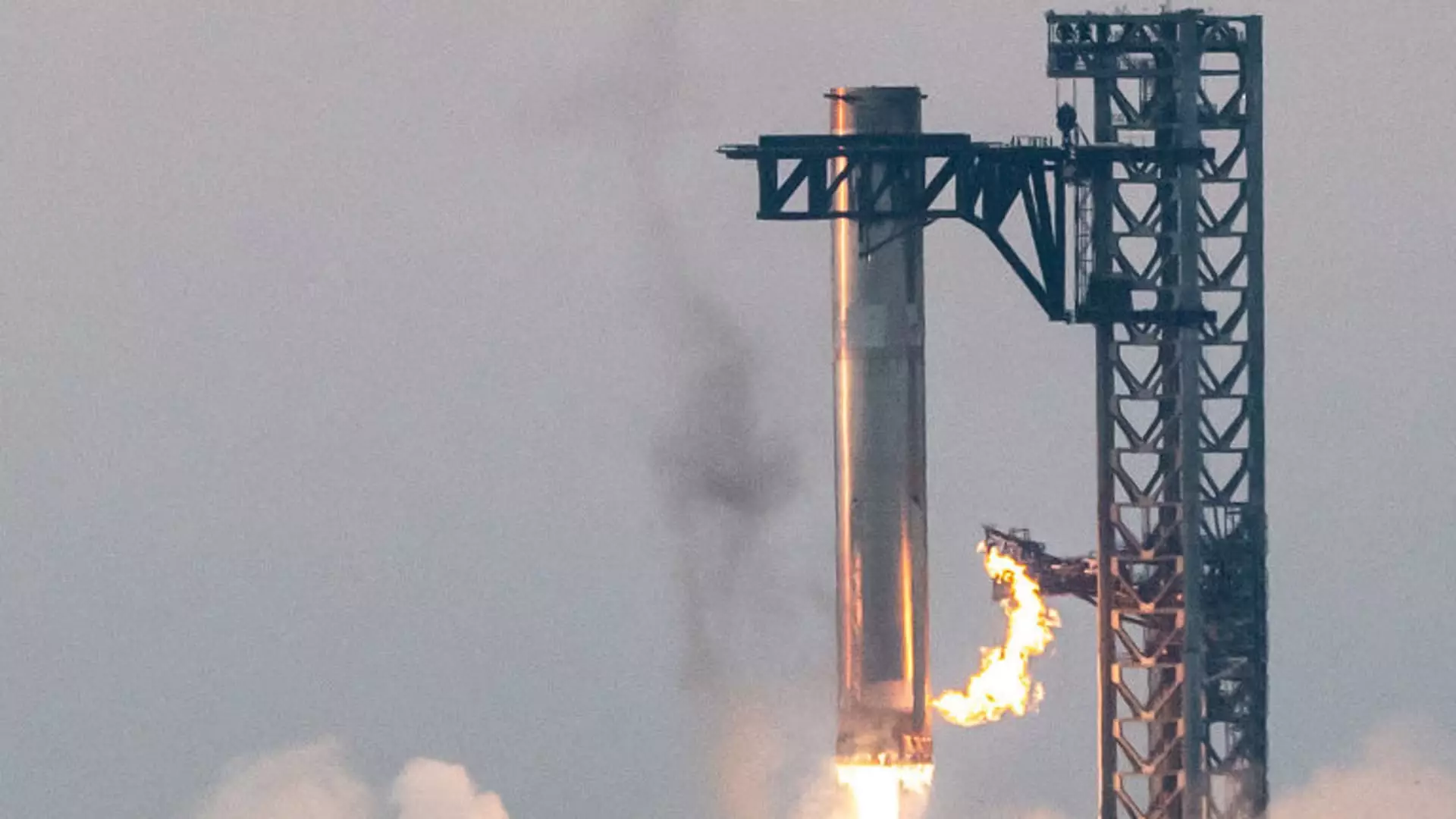Space exploration is experiencing a renaissance, driven in large part by private industry innovation. At the forefront of this transformation is SpaceX, a company that continues to push the boundaries of rocketry. Recently, SpaceX achieved a significant milestone with the successful test of its Starship rocket system—the fifth test flight, which not only showcased the rocket’s capabilities but also marked an essential step toward realizing a future of reliable and reusable space travel.
A New Era in Rocketry
The launch of Starship, which took place at 8:25 a.m. ET from SpaceX’s launch facility located in Brownsville, Texas, is a prime example of how far the company has come since its inception. The Starship system has been designed as a fully reusable spacecraft, with the ambition to transport both cargo and humans to destinations beyond Earth, including Mars and back to the Moon under NASA’s Artemis program. The successful “catch” of the Super Heavy booster by the company’s launch tower signifies a leap forward in making space travel more sustainable.
The dramatic return of the Super Heavy booster, landing perfectly onto the tower’s arms nearly seven minutes post-launch, was considered by many, including SpaceX communications manager Dan Huot, as seemingly “magical.” Such accomplishments build on a series of previous test flights where each iteration gathered more data and insights, progressively contributing to the development of this technologically complex system.
The implications of the Starship test flights extend beyond SpaceX’s corporate goals; they also play a pivotal role in NASA’s future exploration missions. NASA Administrator Bill Nelson publicly congratulated SpaceX following the successful test, underlining the importance of these continued developments as a prelude to humanity’s return to the Moon. SpaceX has secured a multibillion-dollar contract with NASA to use its Starship as a crewed lunar lander, solidifying the rocket’s role in not just corporate strategies but also national and global space objectives.
The Starship system, standing at an impressive 397 feet in height, is the tallest and most powerful rocket ever constructed. This gargantuan structure is fortified with 33 Raptor engines that produce more than 16 million pounds of thrust—almost twice that of NASA’s own Space Launch System. As powerful as it is, Starship has a unique design geared toward reusability, a factor that could significantly reduce the cost of access to space and, consequently, expand the frontiers of human exploration.
Despite these successes, SpaceX has not navigated its journey without challenges. The Federal Aviation Administration (FAA) has been a critical player in the regulatory landscape surrounding spacecraft launches. Recently, the FAA expedited the licensing process for the fifth flight, but the broader implications of regulatory scrutiny have been issues of contention. SpaceX leadership, including Elon Musk, has been vocally critical about delays attributed to what they characterize as “superfluous environmental analysis.”
Environmental concerns have also weighed heavily on SpaceX, requiring the company to address penalties for unauthorized water discharges at their Texas launch site. Despite these challenges, SpaceX’s leadership has gravitated towards a philosophy of learning from each test flight to fine-tune their processes and minimize such issues moving forward.
Behind every successful launch lies an extensive amount of preparation and engineering prowess. SpaceX engineers have invested years of effort into developing the catch system that is now in play. The infrastructure necessary to catch the booster is both complex and a testament to the company’s innovative spirit. With each successful catch, SpaceX grows more confident about the viability of their fully reusable rocket concept.
To ensure the safety and success of the recovery, SpaceX established rigorous criteria that must be met for the booster’s return trajectory. In the event conditions were not optimal, contingency plans were in place, including a potential splashdown off the coast of the Gulf of Mexico. This meticulous attention to detail highlights SpaceX’s commitment to public safety while advancing their ambitious projects.
The Future of SpaceX and Beyond
Looking forward, SpaceX anticipates conducting hundreds of Starship missions, although crewed flights are not slated to occur until they are confident in operational safety and capability. As the world of aerospace shifts, SpaceX’s efforts can be viewed as a catalyst for a future where regular, affordable access to space may become commonplace. The company’s innovative approaches not only contribute to its success but could also lay the groundwork for humanity’s next great adventures beyond Earth. In the realm of space exploration, the achievements of SpaceX may ultimately inspire a new generation of explorers eager to unlock the mysteries of our universe.

Leave a Reply